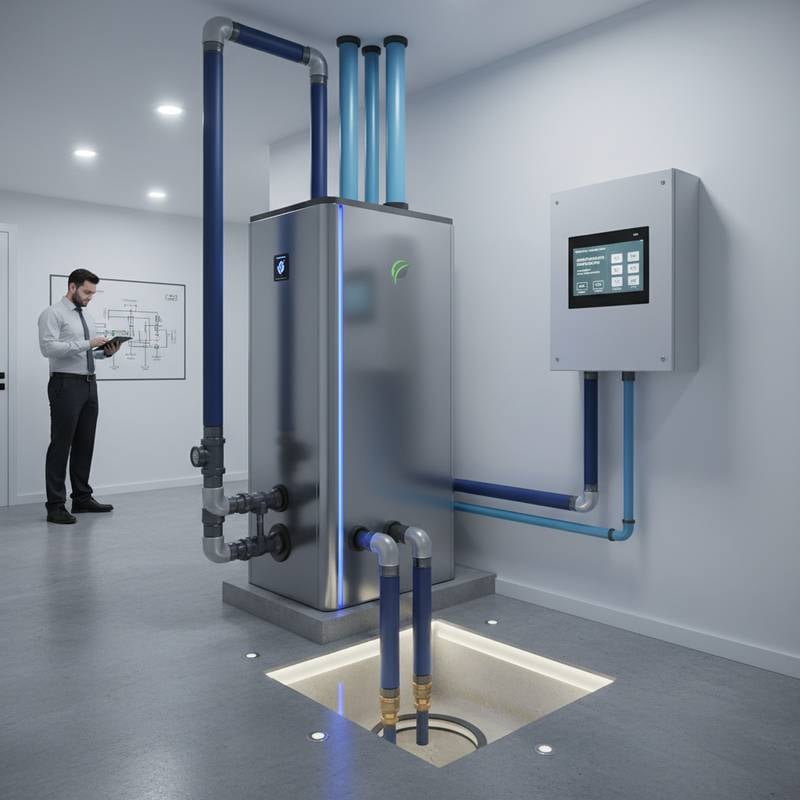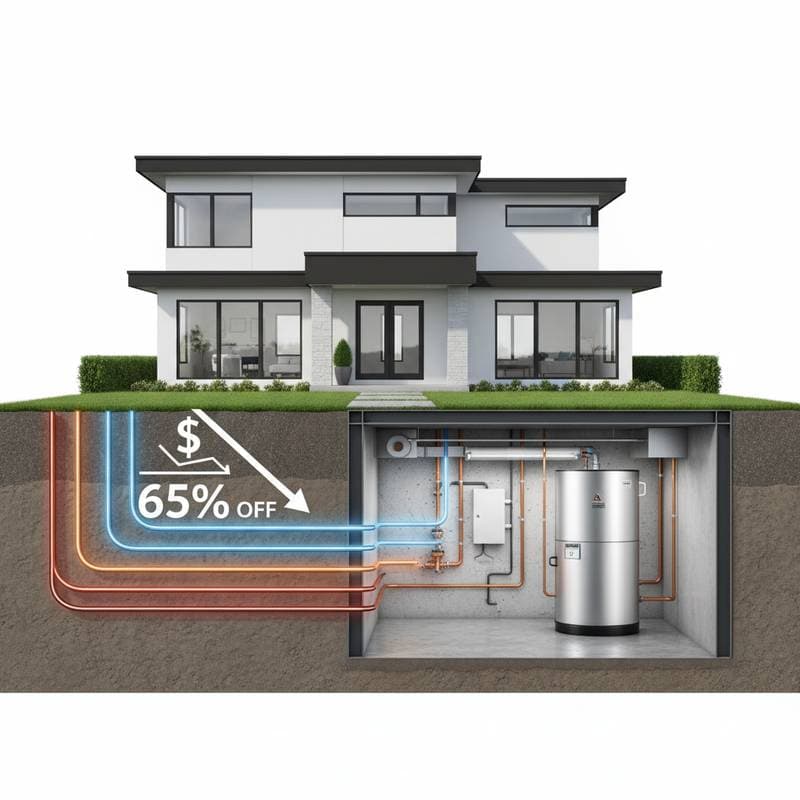Understanding Geothermal Cooling
Geothermal cooling represents an innovative approach to climate control that draws on the earth's natural thermal properties. Unlike traditional air conditioning units that rely on electricity-intensive compressors, geothermal systems exchange heat with the ground to maintain indoor comfort. This method proves particularly effective in regions with extreme summer heat, offering a stable alternative to fluctuating outdoor temperatures.
The core principle involves circulating fluid through underground loops to absorb or release heat. In cooling mode, the system transfers excess indoor heat to the cooler earth, ensuring consistent temperatures without the noise or inefficiency of conventional units. Homeowners appreciate the seamless integration of this technology into existing HVAC setups.
How Geothermal Systems Operate
Geothermal heat pumps serve as the heart of these cooling systems, functioning in reverse during summer months. Warm air from inside the home passes over a refrigerant coil, where heat transfers to a fluid loop buried underground. This fluid, often a water-antifreeze mixture, carries the heat away to depths where soil temperatures remain steady year-round, typically between 45 and 75 degrees Fahrenheit depending on location.
Once cooled, the fluid returns to the heat pump, ready to absorb more heat from the home. The process repeats efficiently, with minimal energy loss compared to air-source systems that battle hot outdoor air. Engineers design these loops in closed systems to prevent contamination and ensure longevity.
Installation sites influence performance; horizontal loops suit larger properties with ample yard space, while vertical loops work well for smaller lots by drilling deeper boreholes. Professionals assess soil composition, water table levels, and local climate to optimize system efficiency.
Types of Geothermal Cooling Systems
Homeowners encounter several configurations when considering geothermal cooling, each tailored to specific needs and site conditions.
-
Closed-Loop Systems: These dominate the market due to their durability. Pipes form continuous loops filled with fluid that circulates without direct ground contact, avoiding issues like mineral buildup.
-
Horizontal: Buried in trenches four to six feet deep, ideal for expansive land.
-
Vertical: Drilled 100 to 400 feet deep, suitable for limited space.
-
Pond/Lake: Submerged coils in standing water, leveraging natural cooling if a body of water exists nearby.
-
Open-Loop Systems: These draw groundwater directly from wells for heat exchange before discharging it. They require abundant clean water sources and regulatory approval, but offer high efficiency in watery environments.
-
Direct Exchange Systems: Copper coils buried directly in the ground transfer heat without intermediary fluid. This compact design reduces installation complexity, though it demands precise soil analysis to prevent corrosion.
Selecting the right type involves consulting certified installers who evaluate property layout and budget constraints.
Key Benefits of Geothermal Cooling
Geothermal systems deliver multifaceted advantages that extend beyond simple temperature regulation. Energy efficiency stands out, with these units achieving coefficients of performance up to four times higher than standard air conditioners. This means one unit of electricity produces up to four units of cooling, translating to substantial reductions in monthly bills.
Environmental impact diminishes significantly, as lower energy use correlates with fewer greenhouse gas emissions. In areas with renewable energy grids, the carbon footprint shrinks even further. Indoor air quality improves too, since the systems often incorporate advanced filtration without relying on outdoor air intake.
Durability defines another strength; ground loops last 50 years or more, while indoor components endure 25 years with routine maintenance. Quiet operation enhances livability, eliminating the hum of outdoor compressors. Home value may increase, appealing to eco-conscious buyers in competitive markets.
Installation Costs and Financial Incentives
Upfront expenses for geothermal cooling range from $15,000 to $40,000, depending on system size, loop type, and property features. Larger homes or complex sites push costs higher, including excavation, drilling, and heat pump integration. Financing options, such as home equity loans or green energy programs, ease the initial burden.
Government incentives offset much of the investment. The federal Investment Tax Credit covers 30 percent of qualified costs through 2032, with potential state rebates adding thousands more. Utility companies often provide additional grants for high-efficiency installations, rewarding participants with quicker payback periods of five to ten years.
Long-term savings accumulate rapidly; annual energy reductions of 30 to 70 percent recoup costs efficiently. Maintenance remains low, limited to annual filter changes and periodic loop inspections, avoiding the frequent repairs common in traditional systems.
Steps to Implement Geothermal Cooling
Transitioning to geothermal cooling begins with thorough preparation to ensure success.
-
Site Assessment: Hire a qualified contractor to evaluate your property. They measure square footage, analyze soil and groundwater, and review local zoning regulations.
-
System Design: Based on assessment data, design the loop configuration and select equipment sized for your home's cooling load. Energy audits help pinpoint inefficiencies to address during installation.
-
Permitting and Funding: Secure necessary permits and apply for incentives. Coordinate with financial advisors to structure payments that fit your budget.
-
Installation Process: Excavation or drilling occurs first, followed by loop placement and heat pump hookup. The entire project typically spans one to two weeks, minimizing disruption.
-
Testing and Optimization: Post-installation, technicians test the system for performance and balance airflow. Smart thermostats enable fine-tuning for peak efficiency.
Ongoing monitoring through manufacturer apps tracks usage and alerts to maintenance needs.
Realizing Sustainable Comfort with Geothermal
Adopting geothermal cooling positions homeowners at the forefront of energy innovation, blending reliability with ecological responsibility. The technology not only cools effectively but also prepares residences for future climate challenges. By investing now, individuals secure comfort, savings, and a lighter environmental load for generations ahead.










